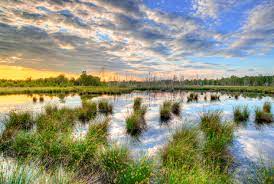In Broward County, Florida, rapid development and shrinking wetlands presented an unusual business opportunity for Lew Lautin, chief executive officer of Florida Wetlandsbank. By transforming a weed-choked, garbage-strewn tract near Pembroke Pines into a pristine wetland, he created a product that was in high demand by local developers.
Wetland regulations require developers to compensate for wetlands that they destroy. Lautin leaped to fill the void. He leased the 450-acre site from the city, cleaned it, lowered the ground level to allow water flow, and added more than a million new trees and plants.
By now the pickerel weed, sawgrass, and bulrushes are flourishing; oak, slash pine, and bald cypress are taking hold; and wildlife has returned. The Florida Audubon Society has counted 108 varieties of birds on the property. Furthermore, the wetland is also cleaning up the water supply before it seeps into the aquifer.
Without doubt, the project was an expensive one. Just the permits and licensing fees came to $4.5 million, with another half million for a trust fund to cover maintenance. On the other hand, developers snapped up the credits to Lautin’s wetland which sold for as much as $60,000 an acre. The credits also allowed them to avoid a complex permitting process.
The lack of suitable land in Broward County for additional wetland development has forced Lautin to move elsewhere, but he sees no end to the demand as long as mitigation is required. Near Naples, Florida, he is transforming 2,775 acres into new wetlands.




